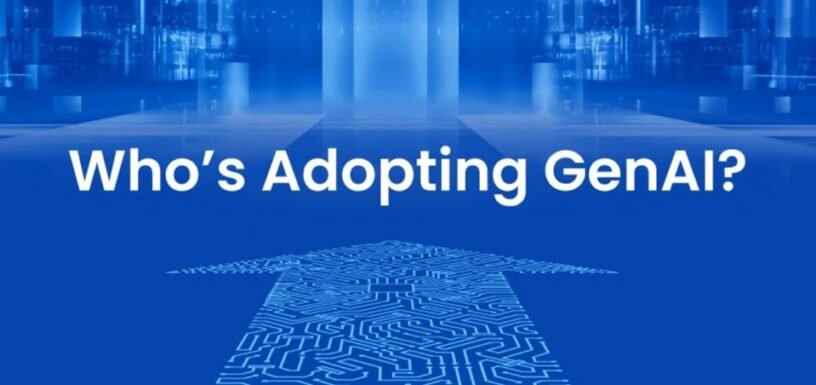Been hearing a lot about GenAI Adoption lately? Wondering why it seems like everyone else has figured out how to use it, but you’re stuck in the slow lane? Well, buckle up, because you’re not alone. Even though GenAI has been around for a while now, companies are still struggling to adopt it.
There are a few reasons for this. First, many companies are still grappling with how to use even basic AI, like figuring out how to get a computer to learn from data. Imagine trying to navigate a stormy sea in a brand new boat; that’s kind of what it’s like for businesses trying to use GenAI Adoption on top of older AI systems.
Second, GenAI is super complex and good at specific things, not everything. It can write a report in no time, but it can’t do something simple like sorting through driver’s licenses. So, companies need to carefully pick what tasks they want GenAI to tackle.
Third, the long-term effects of GenAI Adoption are still unclear. No one knows exactly how much it will cost or how future regulations might affect it. This uncertainty can make businesses hesitant to jump on board.
So, what can you do if you’re interested in using GenAI Adoption? Here are a couple of tips:
- Identify a specific problem you want GenAI to solve. Don’t just chase the hype!
- Think about combining GenAI with other tools to make it more effective.
- Be patient and realistic about what GenAI can achieve.
GenAI is a powerful tool, but it’s not a magic solution. By understanding the challenges and planning carefully, you can increase your chances of successfully adopting GenAI in your business. Good luck!
Here are some additional insights:
- Companies are struggling to integrate traditional AI with GenAI. This is because they are fundamentally different beasts. Traditional AI is good at analyzing data and making predictions, while GenAI is good at creating new things, like text, code, or images.
- The long-term implications of GenAI are unclear. This includes the cost of using GenAI and how it might be regulated in the future. These uncertainties can make businesses hesitant to invest in GenAI.
I hope this gives you a better understanding of why adopting GenAI can be so difficult. But don’t let that discourage you! With careful planning and a focus on solving specific problems, GenAI can be a powerful tool for your business.

Here are few frequently asked questions on GenAI Adaption:
What is the GenAI adoption rate?
The rate for GenAI Adoption varies across industries and use cases. Generally, it’s growing steadily as businesses recognize its potential for creative content generation, personalized recommendations, and more. However, specific adoption rates depend on factors like industry readiness, technology maturity, and regulatory considerations.
What is GenAI ServiceNow?
GenAI ServiceNow is a service offered by ServiceNow that leverages generative AI to automate and enhance various aspects of IT service management. It uses AI-powered capabilities to streamline processes, improve user experiences, and drive operational efficiency within the ServiceNow platform.
What is the difference between GenAI and AI?
GenAI typically refers to generative AI, a subset of artificial intelligence focused on creating new data or content based on patterns learned from existing data. It’s used for tasks like image generation, text synthesis, and content creation. AI, on the other hand, is a broader term encompassing various techniques and applications for simulating human intelligence, including machine learning, natural language processing, and robotics. While generative AI is a specific type of AI, AI encompasses a wider range of technologies and applications beyond just generative capabilities.
What are GenAI examples?
Generative AI, or GenAI, has numerous examples across various domains. Some notable examples include:
- Text Generation: Generative models like OpenAI’s GPT (Generative Pre-trained Transformer) series can generate human-like text based on input prompts. They’re used for tasks like language translation, content generation, and story writing.
- Image Generation: Generative Adversarial Networks (GANs) can create realistic images from scratch or modify existing images. They’re used in art generation, image editing, and creating synthetic data for training machine learning models.
- Music Composition: AI systems like Magenta by Google can compose original music in various styles and genres. These systems learn patterns from existing music to generate new compositions.
- Video Synthesis: Deep learning techniques enable the generation of synthetic videos, such as deepfake technology, which can swap faces in videos or even create entirely fabricated videos of people saying or doing things they never did.
- Content Creation: Generative models can automate content creation tasks like writing product descriptions, generating social media posts, or composing email responses.
- Design and Creativity: AI-powered tools can assist designers by generating design variations, suggesting layout options, or creating new visual concepts based on existing designs.
These examples demonstrate how GenAI Adoption across diverse domains to create new content, enhance creativity, and automate tasks traditionally performed by humans.




Leave a Reply